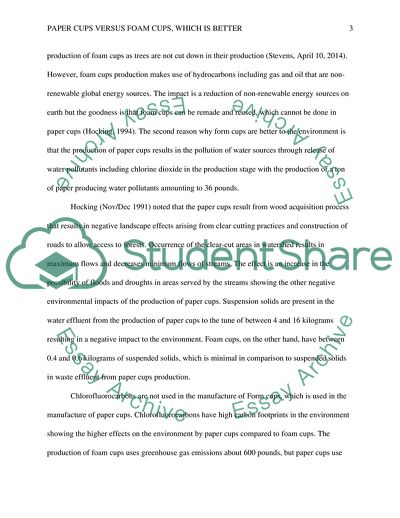Cite this document
(Paper Cups versus Foam Cups Term Example | Topics and Well Written Essays - 3750 words, n.d.)
Paper Cups versus Foam Cups Term Example | Topics and Well Written Essays - 3750 words. https://studentshare.org/environmental-studies/1850820-paper-cups-vs-foam-cups-which-is-better
Paper Cups versus Foam Cups Term Example | Topics and Well Written Essays - 3750 words. https://studentshare.org/environmental-studies/1850820-paper-cups-vs-foam-cups-which-is-better
(Paper Cups Versus Foam Cups Term Example | Topics and Well Written Essays - 3750 Words)
Paper Cups Versus Foam Cups Term Example | Topics and Well Written Essays - 3750 Words. https://studentshare.org/environmental-studies/1850820-paper-cups-vs-foam-cups-which-is-better.
Paper Cups Versus Foam Cups Term Example | Topics and Well Written Essays - 3750 Words. https://studentshare.org/environmental-studies/1850820-paper-cups-vs-foam-cups-which-is-better.
“Paper Cups Versus Foam Cups Term Example | Topics and Well Written Essays - 3750 Words”. https://studentshare.org/environmental-studies/1850820-paper-cups-vs-foam-cups-which-is-better.


